My Favorite Film Experiences Of 2024
A Look Back At An Important Year For Our Cinematic Future
As we look back at 2024, film culture, like our culture and society as a whole, stands on a precipice. Trying to describe my own thinking about this moment and my own deep sense of worry about what is next, I have been likening this experience to that of an unforgettable childhood nightmare— late night, pitch black, walking along the bottom of a cold lake, water to my shoulders, the moon hidden behind thick clouds. The texture of each and every step requires a moment of recognition, but once made, no sense of direction— am I going deeper or walking toward the safety of the shore? Each step grows heavier, the air colder, everything slower, my feet sinking into the muck. Will I drown? Something crawls past my legs. Swim? Which way?
To overcome the uncertainty being sown by those feigning certainty— that is, to resist the demand to give over reality to those seeking to bend it to their will — I have been finding film, literature, theater, and art to be of tremendous help. But it is not enough. Not nearly enough. And yet, in a world where the values and concerns of art, our human experiences, are treated with contempt and disregard by a society hell bent on lying to itself about the past to in order shape a dishonest, corrupt future, art can be a safe harbor, a place that still has the power to refuse, to tell us important truths.
So, how will the cinema rise to meet this moment? How will we frame “success”? How will filmmakers offer us the truth? Will cinemas be a vital, urgent space for connection? Will the ongoing shift toward isolated home viewing, corporate interest, and systemic careerism continue to restrain a meaningful move toward full-throated artistry in American filmmaking? Will the cinematic form matter?
As we arrive in 2025, as we walk along the unknowable bottom of the dark lake, art might be the one thing that can guide us back to the shore. This is how I will remember my favorite film experiences of 20241— bright patches of light that fix in my mind an image of the way forward, a snapshot just before the darkness swallows our bearings. And now, together, we share our hands with one another, palms open, before holding tight, headlong into whatever comes next.
The 2024 Cannes Film Festival Award Ceremony/ ANORA for The Montclair Film Festival
Sometime during the final week of the 2024 Cannes Film Festival, I texted my former film programming partner (and current Head Of Film & Creative Media at the Austin Film Society) Holly Herrick with a plan. We were looking at the odds for the Palme D’Or and, to our delight and surprise, saw that there was a strong possibility that the festival jury, lead by 2024 Jury President Greta Gerwig, would award the most coveted prize in world cinema to the American director Sean Baker for his new film ANORA. Holly & I had a lot of history with both Sean and Greta, having programmed their earliest work2, and so I made a joke that if Greta handed Sean the Palme, we’d have to meet in Chicago3 and watch the universe implode upon itself, like the end of FIGHT CLUB. And then it happened. And while Chicago (and the universe) remain intact, 2024 will always be the year when the cinema of our generation finally reached its proper place in the pantheon, with ANORA being the film that brought the American independent film community together in celebration.
And ANORA itself? It took the usual months for the film to make the leap from Cannes to the award season window in the USA, but once it did, audiences everywhere got a chance to see what all the fuss was about. While so many films that deal with class, gender, sex, and power from an outsider’s perspective, ANORA, like all of Sean’s films, has its boots firmly on the ground and its point of view fixed on the side of the working class. No one in American cinema better understands and depicts the culture, ideals, and dreams of those willing to do whatever they have to do to get by. Sean’s films are all compassion, deep understanding, and are created without an ounce of judgement or shame. I have no idea where he goes next, but I have complete faith in his integrity as a person and artist— he may be the one who is truly changing American cinema.
ENO by Gary Hustwit at Sundance
I wrote extensively about ENO when I saw the second ever public screening of the film at Sundance, and the experience has stayed with me all year long. Since that time, the film, which uses a form of Eno’s own creative process to generate a new version of the film each time it screens, has revolutionized not only the relationship between technology and filmmaking, but also of theatrical distribution, where the filmmakers created multiple, unique copies of the film to screen during its theatrical run. Of course, none of this would matter much at all if the movie itself didn’t work as, well, a movie, but it does, thanks in no small part to the genius of the film’s subject. Eno is effusive, hilarious, warm, and generous— to spend time with him is joyous, fascinating, and deeply inspirational. With this film, Hustwit has transcended not only the traditional mechanics of the film business, but the boundaries between subject, form, artists, and process. ENO is the movie of the year, and maybe, of the future itself.
ÁMA GLORIA by Marie Amachoukeli at Sundance
There is always one— that movie at a film festival that is screening later in the evening, perhaps more lightly attended, one that doesn’t leap off the page when reading the description, but that you go see anyway, only to find yourself transported into the world of the film in a way you never expected. Watching ÁMA GLORIA in January was all of that and more— a beautiful and heart wrenching story about the sudden awareness that the world does not always deliver to us what we want from it. That this revelation is experienced by a child who comes to understand love as a form of letting go? This is a profoundly beautiful film, anchored by an incredible performance from the young Louise Mauroy-Panzani as Cleo. And to think I almost missed it. ÁMA GLORIA was an important reminder: always go and see for yourself.
UNIVERSAL LANGUAGE by Matthew Rankin for The Montclair Film Festival
There are movies that are well made, and then there are movies that seem to be made explicitly for me. Coming on the heels of last year’s incredible MoMA retrospective of Iranian Cinema Before the Revolution (which made my 2023 list), I was not prepared for UNIVERSAL LANGUAGE, Matthew Rankin’s hilariously deadpan reimagining of Iranian cinema in the context of Canadian culture. I walked into this film knowing almost nothing about it, allowing myself to experience the opening sequence with a dawning awareness of the director’s intent before giving myself over completely to the film’s world, where the snow-covered streets of Winnipeg are transformed into a Brutalist landscape that might exist on the outskirts of 1970’s Tehran— a place where the people gather at Tim Horton’s to share tea and the news of the day, and where precocious children find misadventure among unscrupulous adults. Rankin’s sense of humor shines through (an early sequence of a meeting in Quebec has forever transformed my appreciation of the shot/ reverse shot conversation trope), and his love for his influences fills the film with a generous warmth that overcomes its icy milieu. An unexpected joy that proves that our compassion for one another is only limited by our imagination.
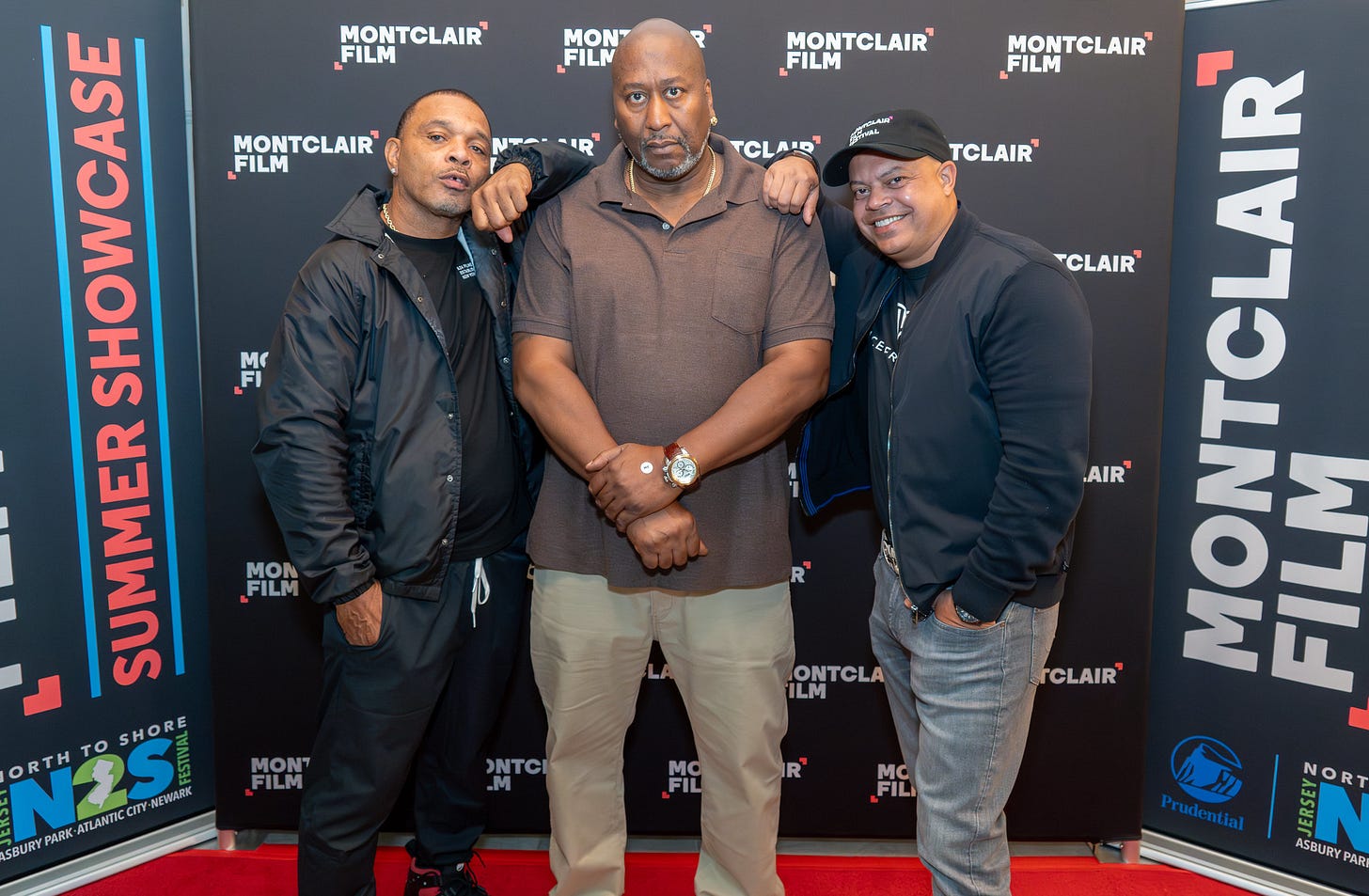
SING SING by Greg Kwedar for Montclair Film
This spring, I was honored to be able to screen Greg Kwedar’s SING SING to a packed theater as part of our first annual Summer Showcase. The film is a powerful story of the impact of collaborative art making on the lives of people who have been incarcerated, but unlike so many other films, it is willing to put its process where its beliefs live— the film stars several men who were formerly incarcerated and for whom the process of creating theatrical productions played an important role in their personal experience. I was honored to host a Q&A with three of them, Clarence Maclin, Sean Dino Johnson, and Jon-Adrian “JJ” Velazquez, who electrified the audience in an honest and often emotional discussion of the film, their lives, and the beliefs they hold about the criminal justice system. A few months after our screening, I was thrilled to see the news that Jon-Adrian Velazquez had been completely exonerated for the crime for which he served nearly 24 years in prison, a crime he did not commit. The film didn’t make that happen, his work did. And yet, in an information environment where incarcerated people are constantly dehumanized, this screening of SING SING was an important reminder of how systems of power must be scrutinized, challenged, and held to account.
CROSSING by Levan Akin for Montclair Film
In 2024, in the United States of America, the lives of transgender people underwent a relentless, unconscionable assault. It may be that this is just the tip of the iceberg, or it may be that everyday Americans, you and me, stand up, raise our voices, and take action to stop this unprecedented wave of dehumanization. For me, no film this year undertook the necessary first step of refusal more powerfully than Levan Akin’s CROSSING, a beautiful film from Georgia that took the marginalization of transgender people as its inciting action, creating a moving portrait of loss that has stayed with me all year long. Mzia Arabuli plays Lia, a retired teacher, who goes looking for her estranged niece Tekla, a trans woman who has fled the rejection of her family and Georgian society to seek survival as a sex worker on the streets of Istanbul. Shot on location and featuring trans performers, the film overturns the cynical dishonesty of bigotry in the name of something much more valuable— understanding, empathy, and connection. As we each decide what we will and must do to provide aid to those that the powerful will exploit and harm, CROSSING is a welcome reminder that inaction comes at a cost to all of us and that sometimes, if we don’t act, it’s too late.
LOOK INTO MY EYES by Lana Wilson at Sundance/ FLIPSIDE by Chris Wilcha for Montclair Film
How do we find solace and meaning in our lives? I always believed that this process was internal, a private reckoning with the world around us. In my case, as a Gen Xer, that meant a lot of self-criticism but also, a realization at an early age that the world was a selfish place, to be confronted with tremendous skepticism. But friends, I have seen the worst minds of my generation poisoned by the cons of would-be tyrants and, true to myself, I am not willing to accept it. Two films this year provided me with what I needed to understand my own refusals.
First, Lana Wilson’s incredible documentary LOOK INTO MY EYES is the story of urban alienation and the attempts of people to connect beyond the limits of rational experience. The film, which follows New York City psychics as they offer readings to their clients, transcends every generalization and expectation to offer a profoundly moving exploration of loss, loneliness, and meaning. I have long admired Lana’s work, but LOOK INTO MY EYES gets at something no other film I saw was able to capture with the same eloquence and grace— how the human need to understand and connect can render all logic meaningless and reveal new forms of feeling and emotion. It felt, for me, a vindication of empathy, a value that remains sorely needed in our culture.
If LOOK INTO MY EYES shows us how our lives are shaped and informed by the impossible, Chris Wilcha’s FLIPSIDE hit home in a different, and no less powerful, way, a self-portrait of dreams deferred in the name of practical concern. Wilcha, whose film THE TARGET SHOOTS FIRST is a Gen X masterpiece, uses footage from years of incomplete film projects to create a film about, well, his inability to complete film projects, with one, a portrait of the small New Jersey record store in which he used to work as a teen, an exemplar of my generation’s deeply held beliefs about integrity— unchanging, authentically itself, refusing the trappings of modern conceptions of success. Flipside Records is beautiful simply because it exists— the perfect embodiment of what we love about the DIY lives we want to create, yet proof of their deepest limitations. Thank you, Chris Wilcha, for capturing us like no one else.
CONCLAVE by Edward Berger/ THE ORDER by Justin Kurzel for The Montclair Film Festival
The procedural is back! Justin Kurzel is a filmmaker I have been following since his film THE SNOWTOWN MURDERS shook me up years ago, and his latest film THE ORDER was one I was really anticipating. He did not let me down— a cops and criminals procedural that shows the brutal reality of violence, THE ORDER gets to the heart of white supremacist terror by highlighting the petty narcissism of its grievance-based culture. Jude Law, Tye Sheridan, and Nicolas Hoult are uniformly excellent, and Kurzel has enough respect for the great procedurals of the past to give us some of the trappings of the genre— the work obsessed investigator who may have gone too far in the past, the naive, idealistic newcomer, the charismatic criminal whose self-righteousness might just be the cause of his downfall. With non-fiction “true crime” and lurid made-for-TV miniseries dominating the landscape, it was thrill to see a taut, powerful gut punch of a great crime thriller on the big screen4.
I was very lucky to be able to see and program CONCLAVE as the Opening Night Film of the 2024 Montclair Film Festival and welcome director Edward Berger for the Q&A. The film, which details the juicy machinations of a fictional papal election, is the type of movie for which the phrase “they don’t make ‘em like this anymore” was coined— a twisty and pulpy procedural that doles out just enough information to keep you hooked before delivering a coup de grace which left the audience gasping for air; returning to the theater’s backstage area in time for the Q&A, I paused behind the screen with Edward Berger as he waited to see how the film’s revelations would land for the audience— when he heard the audible gasps, we both knew that the movie had won over the crowd. An unforgettable moment.
A COMPLETE UNKNOWN at The Nitehawk Prospect Park
I have always experienced Bob Dylan as an almost abstract signifier of his generation. I came to better understand his music later in my own life5— before it opened up for me, I liked some of it, but didn’t experience it in sequence, or understand it in the context of its times, I really didn’t have an adult in my life who was an obsessive (my parents didn’t listen to his music at all) and, crucially, I was not really able to follow along with his lyrical storytelling. Cinematically, it was Martin Scorsese’s NO DIRECTION HOME that really opened the door for me, more so than D.A. Pennebaker’s DONT LOOK BACK (a brilliant verité portrait that was initially more interesting to me for its access to a hidden world than an explanation of Dylan’s broader meaning6), before Todd Haynes’ incredible I’M NOT THERE finally pieced the Dylan mosaic together for me7.
Given Dylan’s sly, nurturing embrace of his own public inscrutability, I think it is safe to say that James Mangold’s A COMPLETE UNKNOWN is the absolute best case scenario for a straight-ahead biopic about Dylan’s early career. First, the film honors Dylan’s perspective on his rise to fame without psychoanalyzing him or trying to infer meaning in his work from the manufactured dramatic sequences in the film— I can’t express enough how satisfying that is. But most of all, while he does a terrific job of embodying Dylan’s physical mannerisms, voice, and singing, Timotheé Chalamet understands the young Dylan in a deeply human way— the desire for integrity and recognition, the hassles of fame, the uncertainty of every relationship. Chalamet’s face captures Dylan’s distress and confidence, his playfulness and his stubborn self-awareness, like a multifaceted mirror. And last, just beneath the surface of the film, a crucial insight— Dylan was right about his own work. If he had listened to the orthodoxy of his contemporaries, he would have never freed himself to be the artist he could and did become. Our world could use a healthy dose of that rebellious truth.
BETWEEN THE TEMPLES by Nathan Silver / A REAL PAIN by Jesse Eisenberg at Sundance
These two films will be forever twinned in my mind for capturing the multifaceted complexity of the Jewish cinematic tradition on screen and, I hope, ushering in a return to the great tragicomic tradition of American Jewish filmmaking upon which I, a non-Jewish cinephile born in 1970, was raised.
Nathan Silver’s BETWEEN THE TEMPLES is a huge leap forward for the filmmaker, whose work I have been lucky enough to program for decades and who, moving past the necessarily hilarious and sometimes disturbing provocations of his earlier films, finds himself working brilliantly with incredible actors to create a story of grief and transformation that was, for me, one of the great love stories of the year. Jason Schwartzman and Carol Kane are beautiful together as they overturn every expectation to provide the perfect amount of neurotic chaos to keep this film a constant, moving surprise, all in a beautifully shot, grain-soaked frame of suburban anonymity that is sorely missing from most of my cinema-going these days.
A REAL PAIN proved to be something else, a film about the insignificance of personal difference in the moments of deeply-felt, shared experience, and how that is sometimes not enough to repair the rifts between us. What really stood out for me about Jesse Eisenberg’s film was the way in which its incredibly performed dialogue, the weighty back and forth, set the stakes between his two young protagonists, and then, how the silences and now-empty spaces arrived like lightning, rendering their differences insignificant against the power of their shared past. This is the first film I saw in ages that took history and intertwined it with character as both personal and political, slowly drawing out the unspeakable past as the defining feature of the unspoken present.
SMALL THINGS LIKE THESE for The Montclair Film Festival
I was proud to host Tim Mielants for a Q&A with SMALL THINGS LIKE THESE, a powerful statement of moral courage that delivered a much-needed dose of hope this year. Mielants’ film follows Bill Furlong (Cillian Murphy, brilliant here), a coal merchant in 1980’s Ireland, and it is intimate and unsettling in its aesthetic approach, not allowing the camera to properly “see” what is happening as a subjective form of Bill’s refusal to acknowledge the world, a visual representation of his own denial. And so, it is Murphy’s face, the surface of Bill’s identity, that carries us forward toward a moral crisis. The scene from this film that continues to stay with me is a quiet, intimate conversation between Bill and his wife Eileen, played by Eileen Walsh, in which she tries to convince him to stay silent and comply with the dark, open secret at the heart of their community. The ease of doing nothing, of enabling the status quo through inaction, becomes, in a single moment, intolerable— I have never seen such a profound moment of revelation delivered with such subtlety. Mielants’ film embodies this restraint, and that may keep it off of most radars, but for me? The power of his understated approach is what moved me deeply.
I’M STILL HERE by Walter Salles/ THE SEED OF THE SACRED FIG by Mohammad Rassoulof for The Montclair Film Festival
The intersection of family life, political oppression, and state violence are at the core of both Walter Salles’ stunning I’M STILL HERE and Mohammad Rassoulof’s unforgettable THE SEED OF THE SACRED FIG, and as the world seemingly tilts further toward authoritarianism all around us, these two films were, far and away, the most meaningful to me in terms of my own thinking about the personal costs of politics.
In I’M STILL HERE, Salles recounts the true story of a family whose father, Rubens Paiva, a left-wing politician in Brazil, is taken away by the secret police, and the violence, intimidation, and upheaval that follow in the wake of his disappearance. Fernanda Torres gives a heartbreaking performance as Eunice Paiva, who must balance her family’s survival with her quest for answers and justice. Salles’ detailed rendering of the small compromises— fear, silence, uncertainty— just tear away at your heart, slowly, filling you with rage and the undeniable awareness that, no matter what happens, justice is impossible.
That same outrage is at the heart of both the story and the production of THE SEED OF THE SCARED FIG which, for me, will be remembered as the movie that defined my 2024. I have written about my support for the now-exiled Mohammad Rassoulof, but this film stands above his own circumstances, another in Rassoulof’s corpus of powerful indictments of totalitarian state power and the corrupting, corrosive impact it has on everyone it touches. Set amidst the real-world protests over the killing of Masha Amini by state authorities (who arrested and beat her to death for wearing her hijab “too loosely,”) the film follows an investigating judge hoping for a promotion, his wife, and their two daughters, students who sympathize with the protests and whose friends are participating in civil disobedience. The family’s clash culminates in a harrowing climax that reinforces the psychopathy of the state’s patriarchal system and exposes how it destroys the very institutions it seeks to uphold. Interestingly, the film was mostly shot in secret, and therefore primarily takes place inside the family’s apartment, where the girls are free to have their heads uncovered8, a symbol of the dissonance between public policy and private reality. Both films provide us with the opportunity to imagine ourselves living within their stories, and to consider how our own system is already creating the intolerable conditions of life under authoritarian rule.
That link will lead you to my interview with Justin from 2012, so give a look!
We were not alone— so many great festivals and programmers had supported those early films, and I am sure they were feeling the same thing.
A reasonable “halfway” point between Brooklyn and Austin…
Which reminds me— paging David Fincher, who has not made a film for theatrical release since GONE GIRL in 2014.
More on all that in my appreciation of Cat Power’s recent and terrific album “Cat Power Sings Dylan: The 1966 Royal Albert Hall Concert.”
Although, now I think the film is INCREDIBLE… #TheTomsTheyAreAChangin’
As my first real experience of Dylan onscreen was HEARTS OF FIRE, you can perhaps understand why? 😉
Women without hijab were almost never seen on screen in Iranian films, but recent protests have made change seem possible.


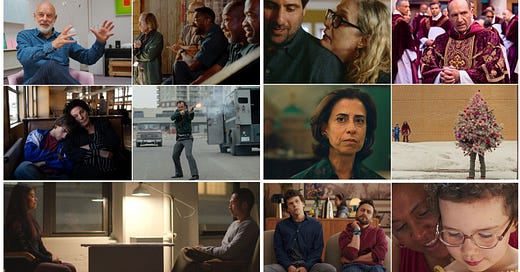



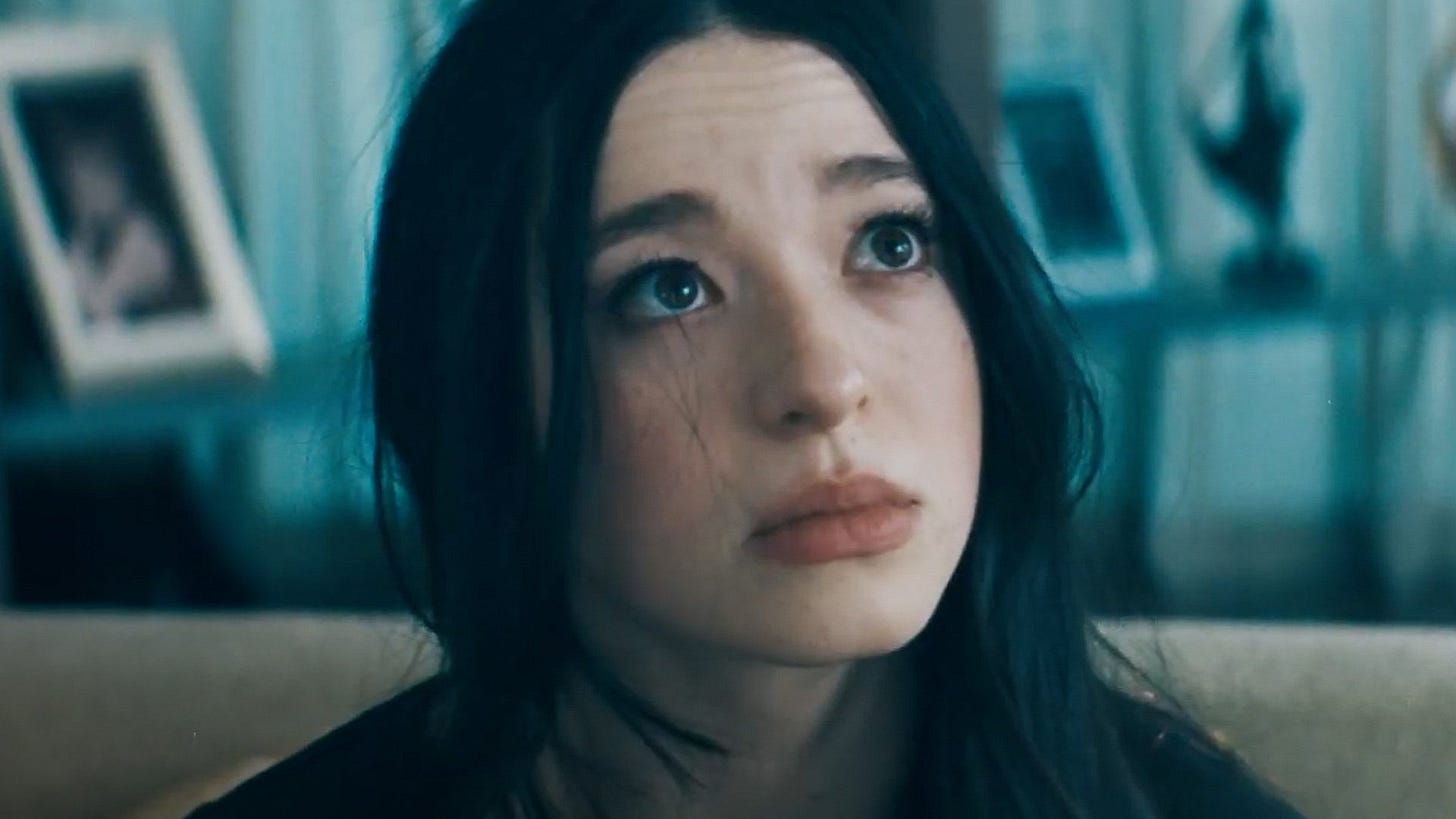


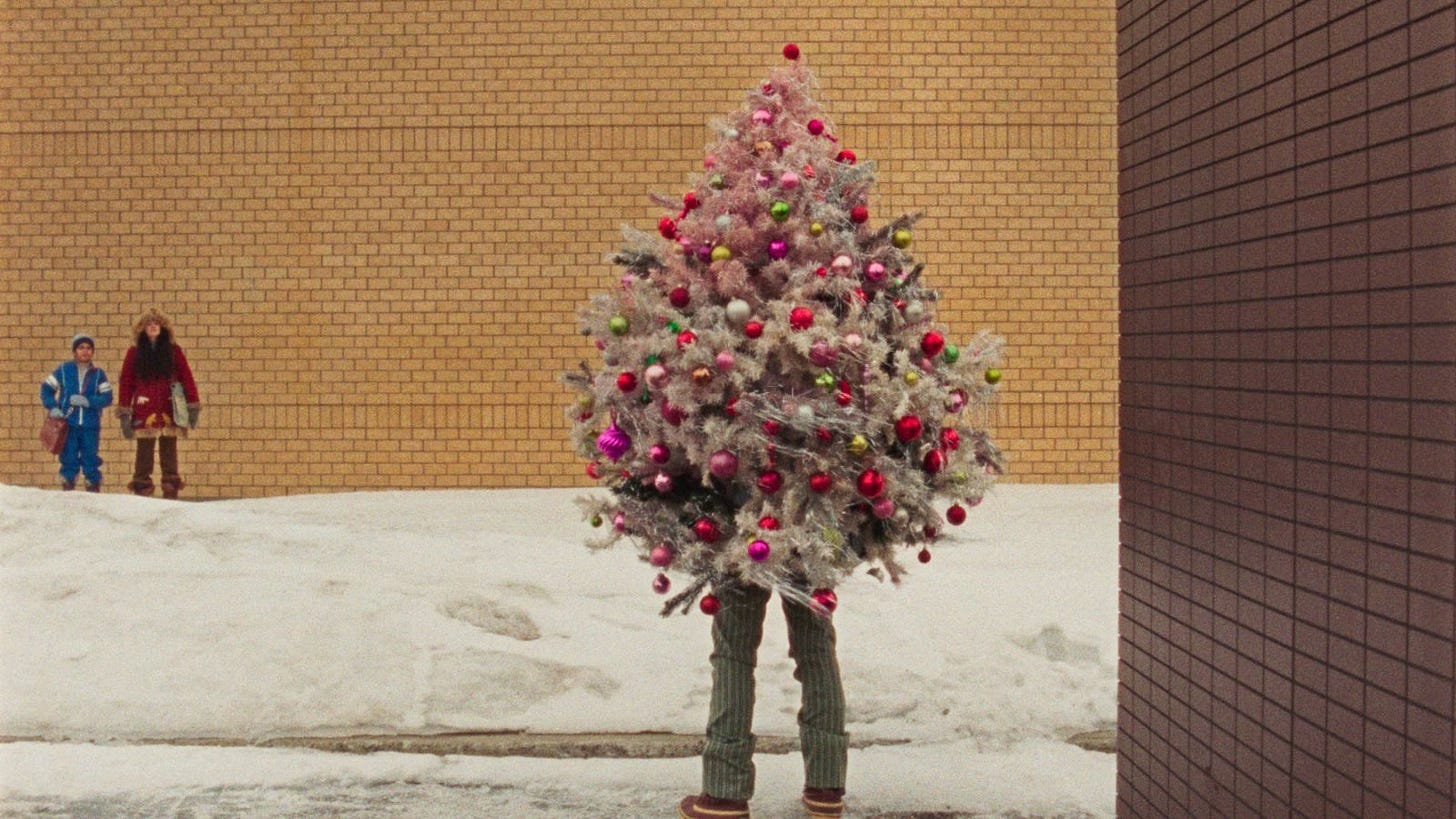
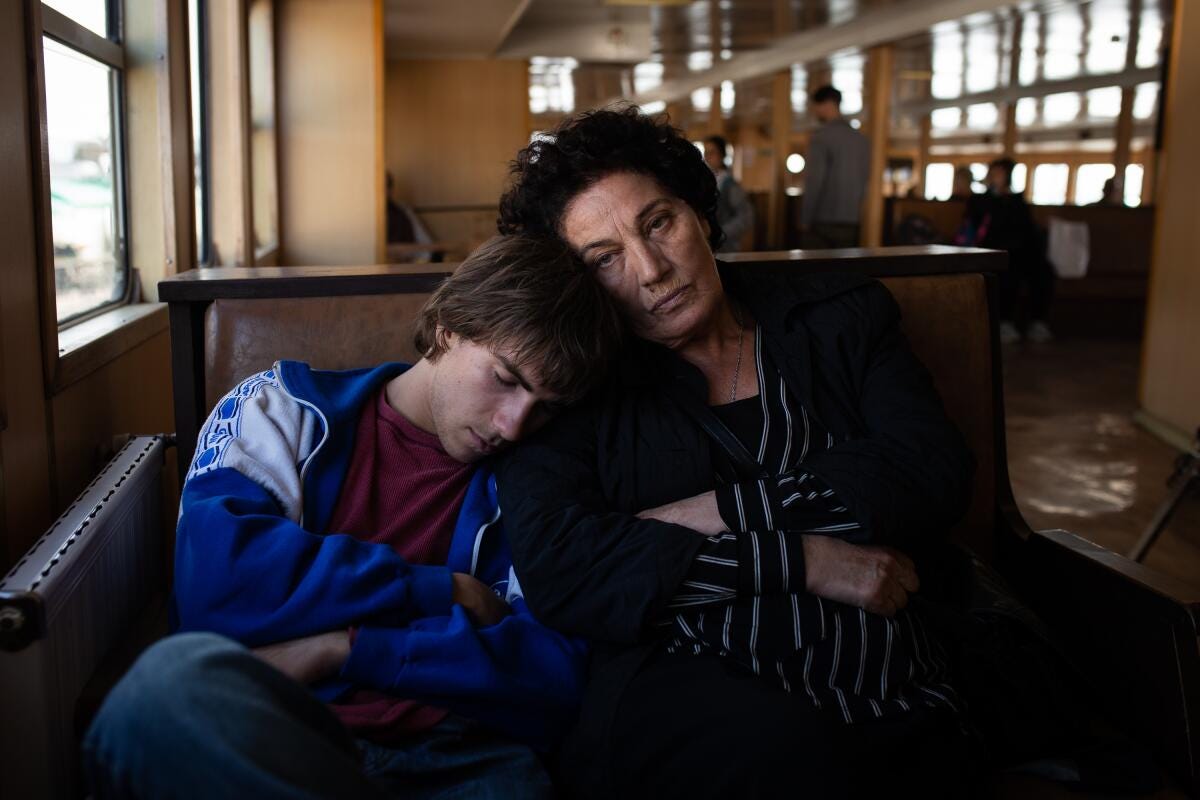
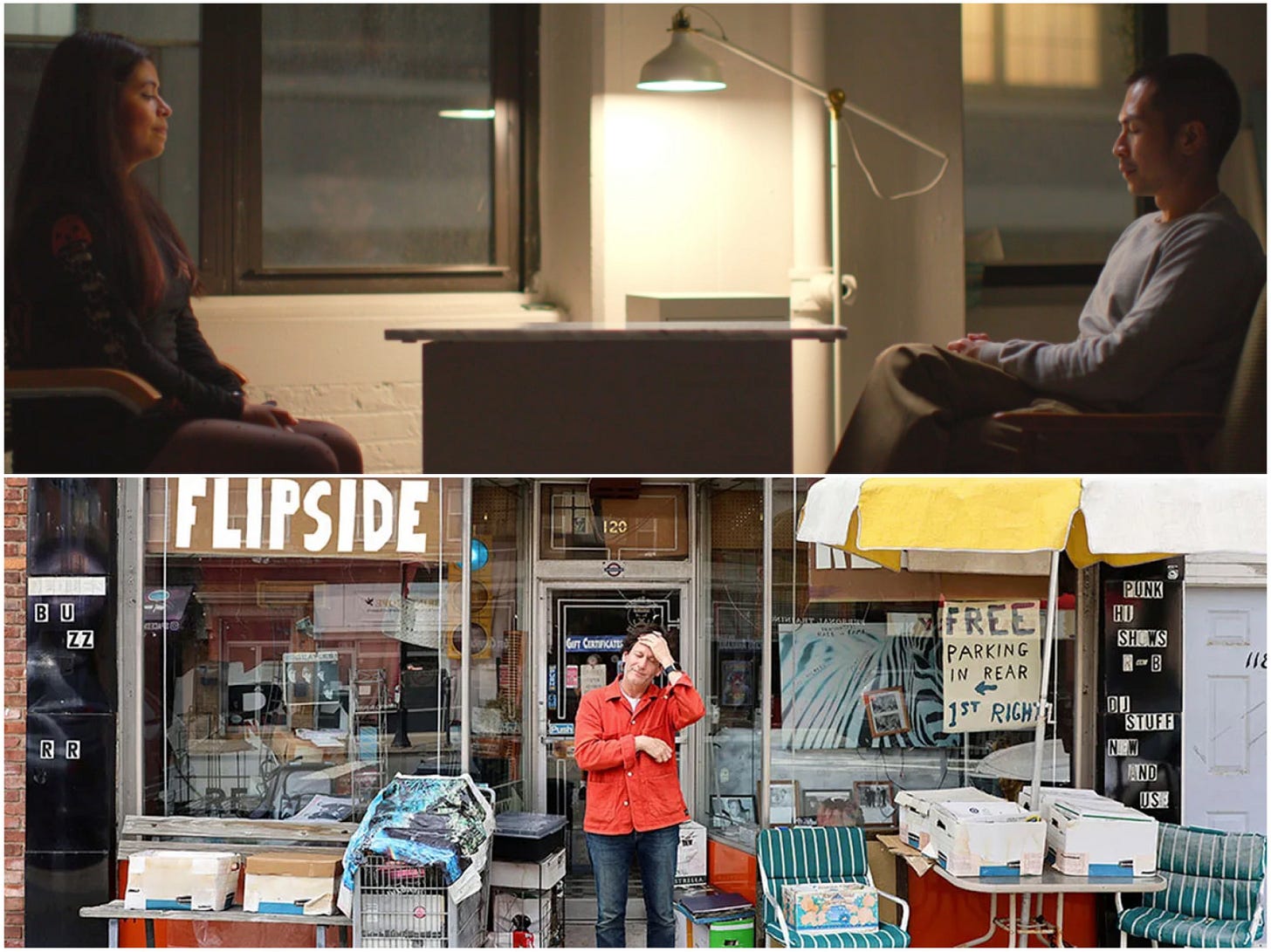
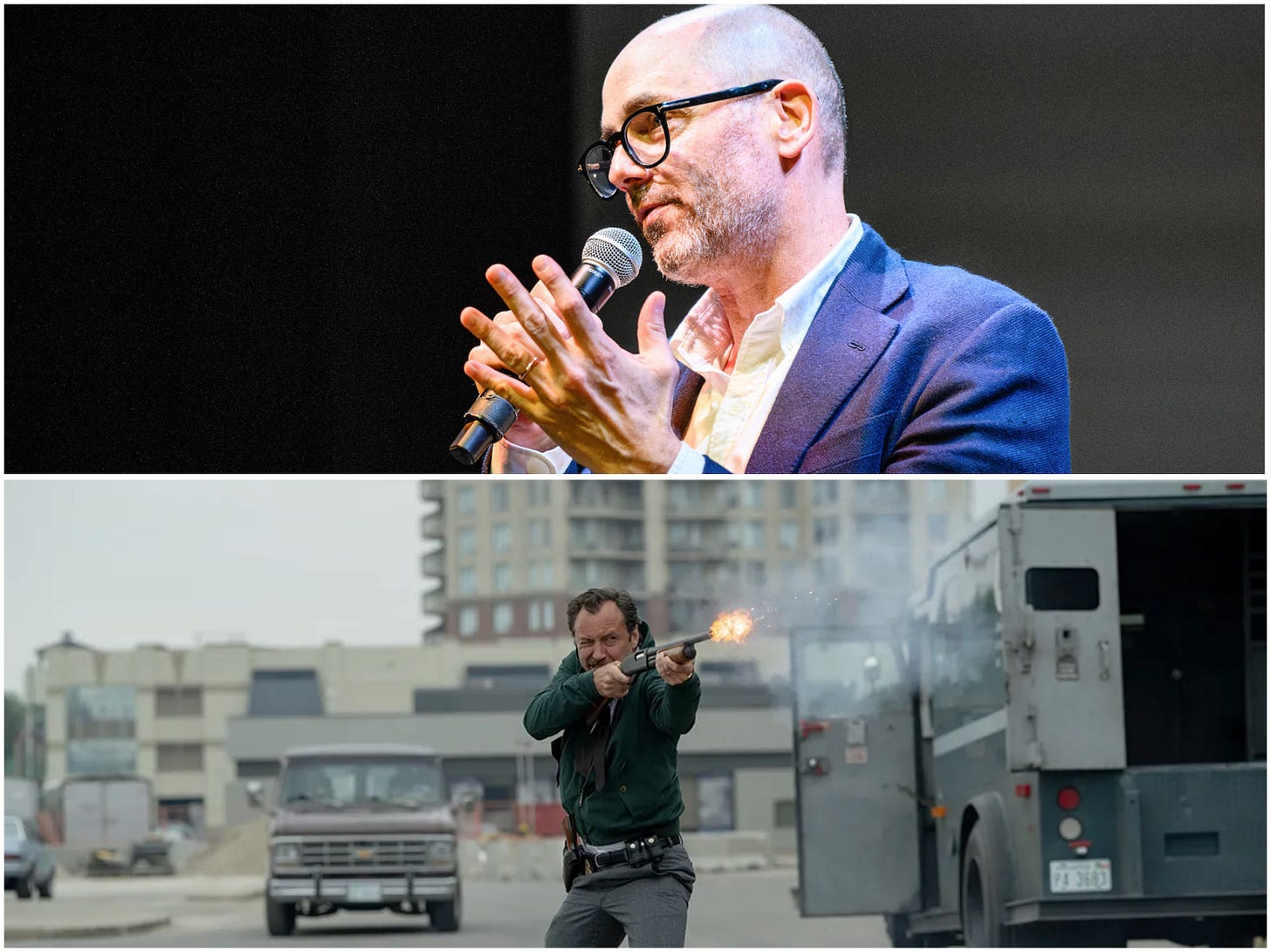
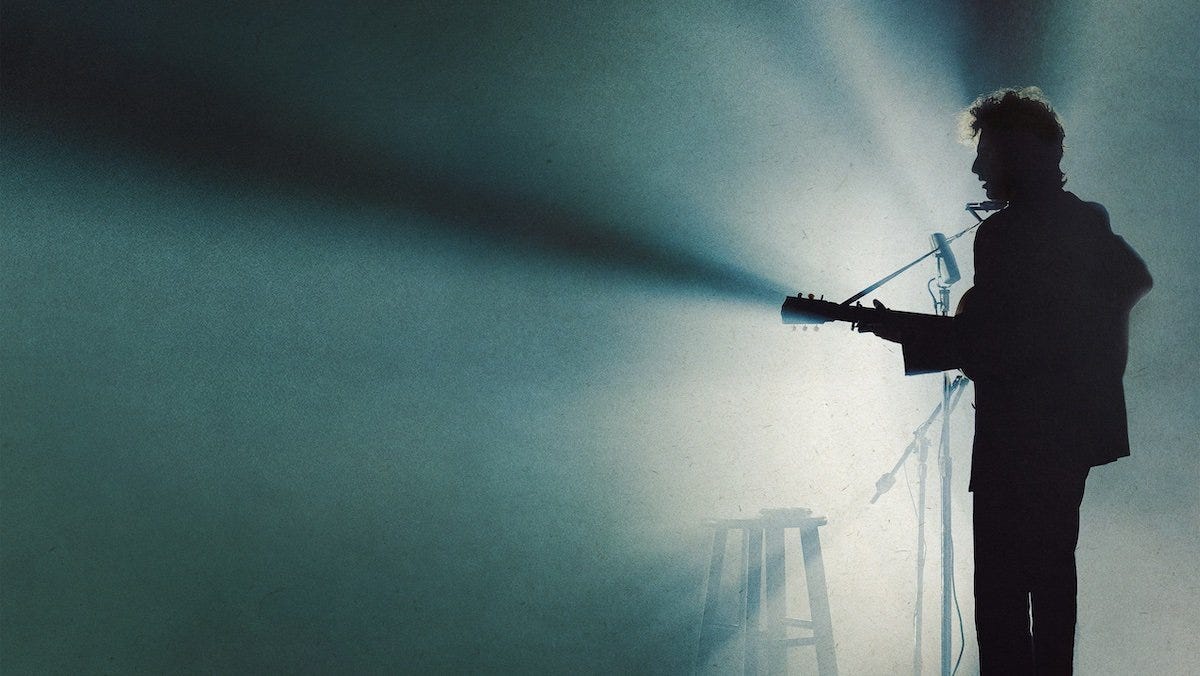
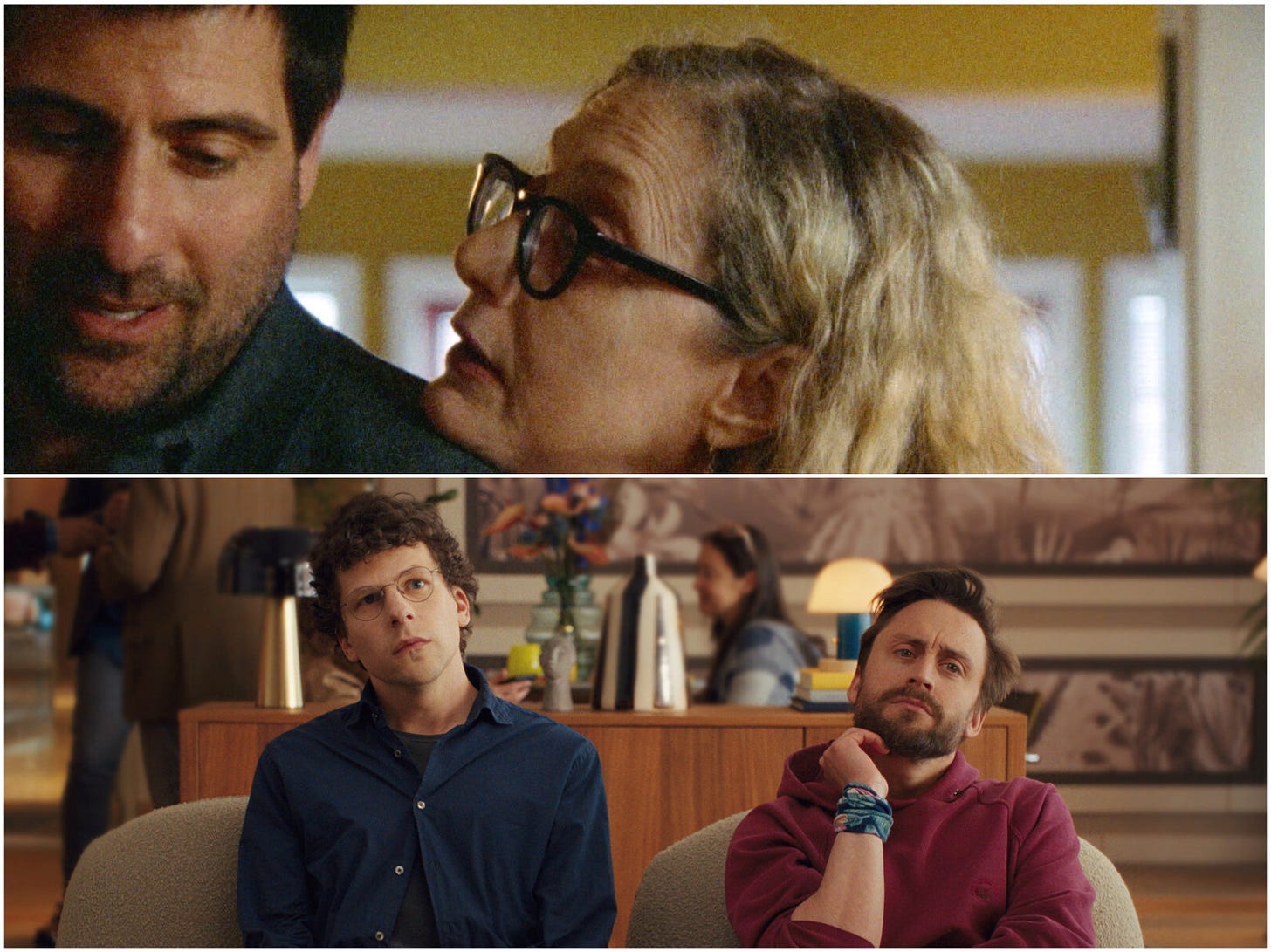
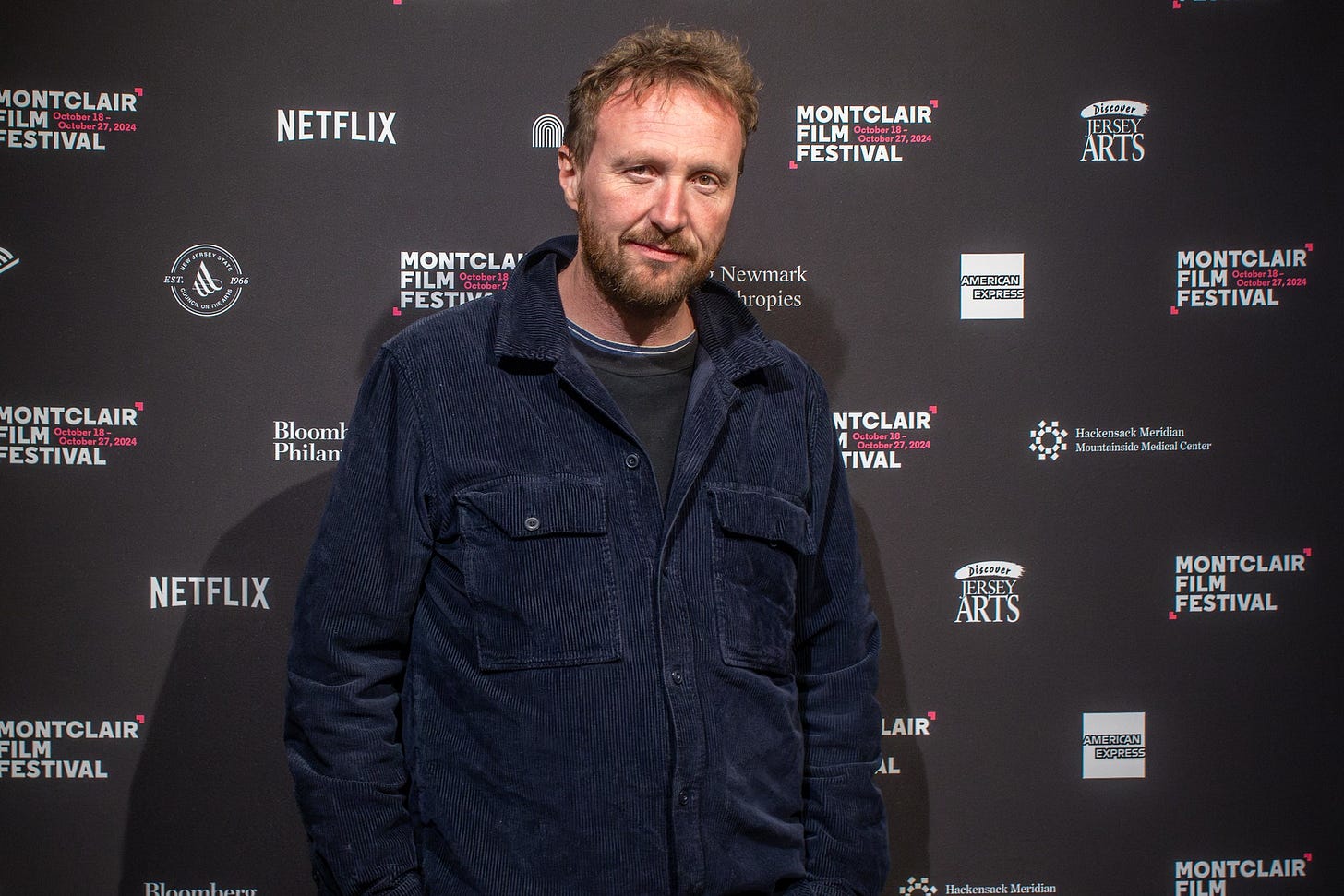
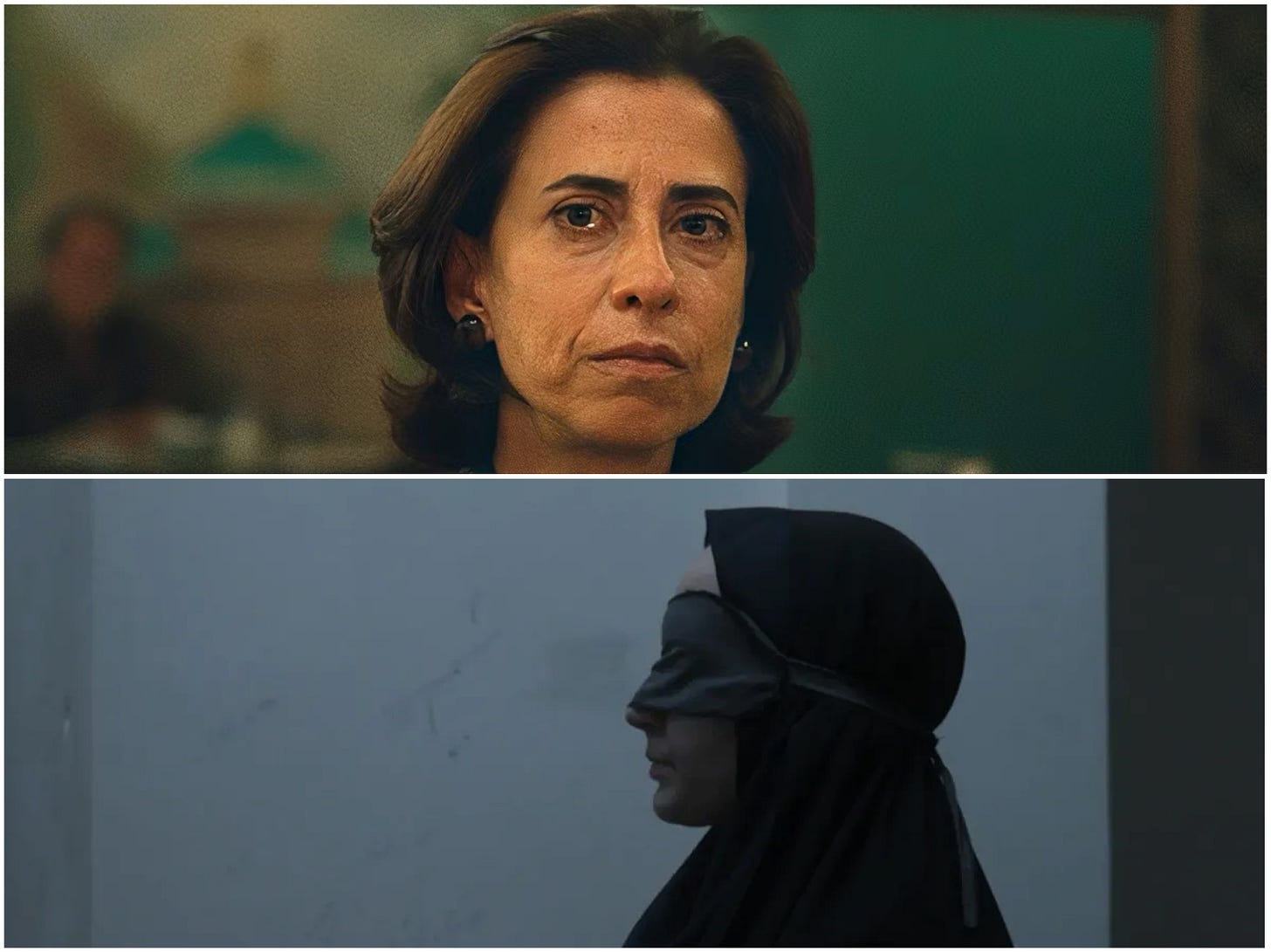
I like “Anora.” Sean Baker is a rollicking satirist whose sex-trade characters are pathetic and heroic.